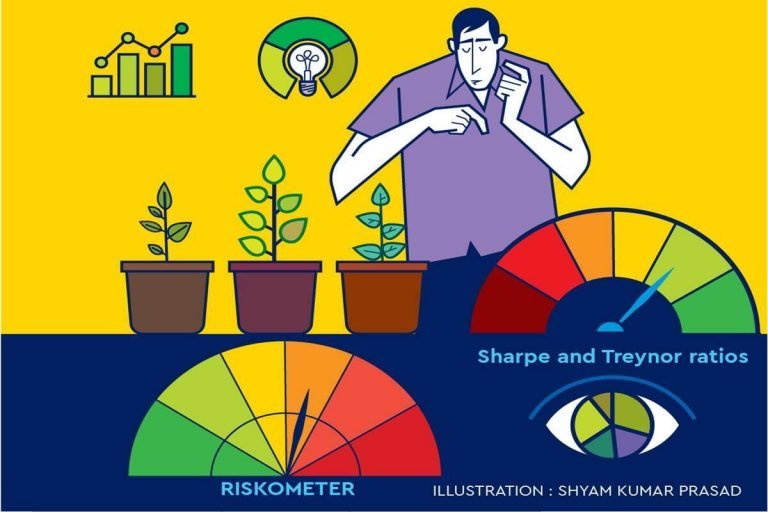
 It’s the volatility of a fund in comparison with its benchmark index. A Beta of greater than 1 means the scheme is extra risky than its benchmark. If it’s decrease than 1, then it’s much less risky than the benchmark.
It’s the volatility of a fund in comparison with its benchmark index. A Beta of greater than 1 means the scheme is extra risky than its benchmark. If it’s decrease than 1, then it’s much less risky than the benchmark.
By Ashwin Patni
For many traders, choosing the right mutual fund is akin to fixing a jigsaw puzzle. So with out trying on the ‘particular person items’ of the puzzle, traders attempt to hunt for the massive image – ‘Returns’. However it’s these particular person items which play a key position in figuring out how the massive image will appear to be.
To make it handy for traders, these particular person items are elaborately described in what is named a ‘Fund Factsheet’ accessible on each firm’s web site. Such data helps an investor in assessing which mutual fund scheme greatest aligns together with his monetary targets and expectations and thus makes an knowledgeable funding resolution. Listed below are the seven key issues that you must search for in a factsheet:
Funding goal
This conveys the asset lessons and geographies the fund will spend money on, the form of returns it goals to generate and the time horizon it requires for this. A ‘Riskometer’, indicating the extent of danger the scheme could be endeavor, can be offered. Primarily based on this, you’ll be able to decide whether or not it aligns together with your monetary planning.
Customary Deviation
Sometimes, traders desire stability as an alternative of volatility of their returns. And therefore, you must take into account Customary Deviation (SD) as a key efficiency metric. SD measures the volatility of a fund’s returns compared to its common; i.e., how a lot a fund’s returns can fluctuate from its historic return. For instance, if a fund has 15% common return and SD of 5%, then its return can range from 10-20%. The extra the SD, larger the volatility of the fund.
Beta
It’s the volatility of a fund in comparison with its benchmark index. A Beta of greater than 1 means the scheme is extra risky than its benchmark. If it’s decrease than 1, then it’s much less risky than the benchmark.
Sharpe Ratio
If you need to select between two funds providing the identical stage of returns, then Sharpe Ratio will be one of many deciding components. It compares a fund’s efficiency in relation to the danger that it has taken, thereby reflecting its risk-adjusted returns. The Sharpe Ratio is most popular to be larger.
Benchmark comparability
The factsheet offers the scheme’s historic returns compared to its benchmark. Whereas previous efficiency shouldn’t be a assure of future returns, it provides an concept of how typically the scheme outperformed or underperformed the benchmark. Returns generated in extra to the benchmark returns are known as ‘Alpha’. Something greater than zero is seen nearly as good alpha.
Portfolio Turnover Ratio
A buy-and-hold method might not work always, however it’s nonetheless fascinating that the portfolio of a fund stays largely steady. The portfolio turnover ratio (PTR) displays this by calculating the proportion of a fund’s holdings which have modified in a given 12 months. It’s advisable to select funds with decrease/reasonable PTR because it signifies well-researched and well-timed investments.
Sectoral allocation
A factsheet reveals the scheme’s publicity to fairness, debt and the money stability accessible. It additionally mentions the sectoral and company-wise allocation of the fund. This offers you a good suggestion of whether or not the portfolio is diversified or concentrated and whether or not the scheme is sticking to its goal.
The author is head, Merchandise & Options, Axis AMC
Get reside Inventory Costs from BSE, NSE, US Market and newest NAV, portfolio of Mutual Funds, Take a look at newest IPO Information, Greatest Performing IPOs, calculate your tax by Earnings Tax Calculator, know market’s High Gainers, High Losers & Greatest Fairness Funds. Like us on Fb and observe us on Twitter.
![]() Monetary Specific is now on Telegram. Click on right here to affix our channel and keep up to date with the most recent Biz information and updates.
Monetary Specific is now on Telegram. Click on right here to affix our channel and keep up to date with the most recent Biz information and updates.